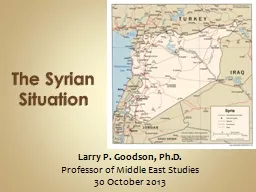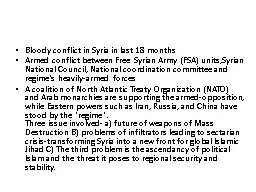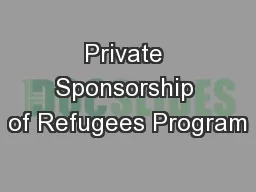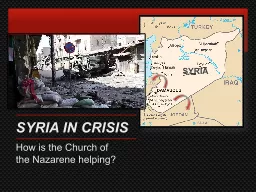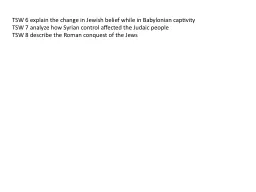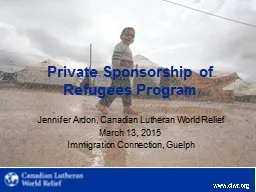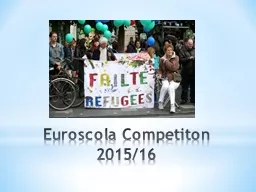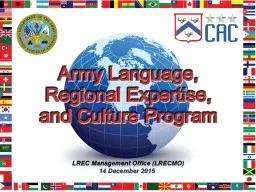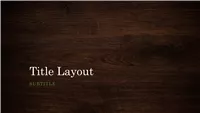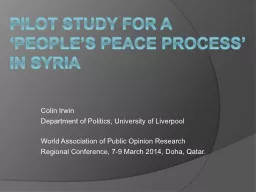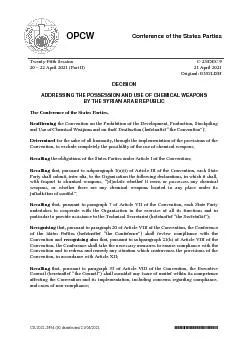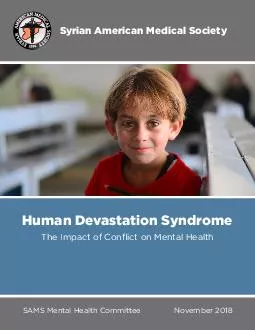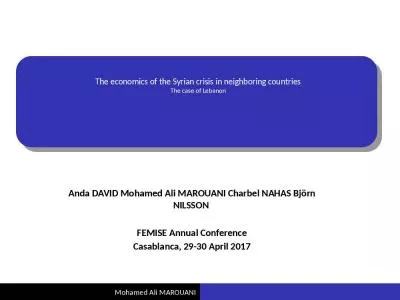PPT-The Syrian Situation Larry P. Goodson, Ph.D.
Author : pasty-toler | Published Date : 2018-11-01
Professor of Middle East Studies 30 October 2013 Larry Goodson PhD UNC 1990 Political science economics history Lived and traveled in Middle East and South Asia
Presentation Embed Code
Download Presentation
Download Presentation The PPT/PDF document "The Syrian Situation Larry P. Goodson, ..." is the property of its rightful owner. Permission is granted to download and print the materials on this website for personal, non-commercial use only, and to display it on your personal computer provided you do not modify the materials and that you retain all copyright notices contained in the materials. By downloading content from our website, you accept the terms of this agreement.
The Syrian Situation Larry P. Goodson, Ph.D.: Transcript
Download Rules Of Document
"The Syrian Situation Larry P. Goodson, Ph.D."The content belongs to its owner. You may download and print it for personal use, without modification, and keep all copyright notices. By downloading, you agree to these terms.
Related Documents

